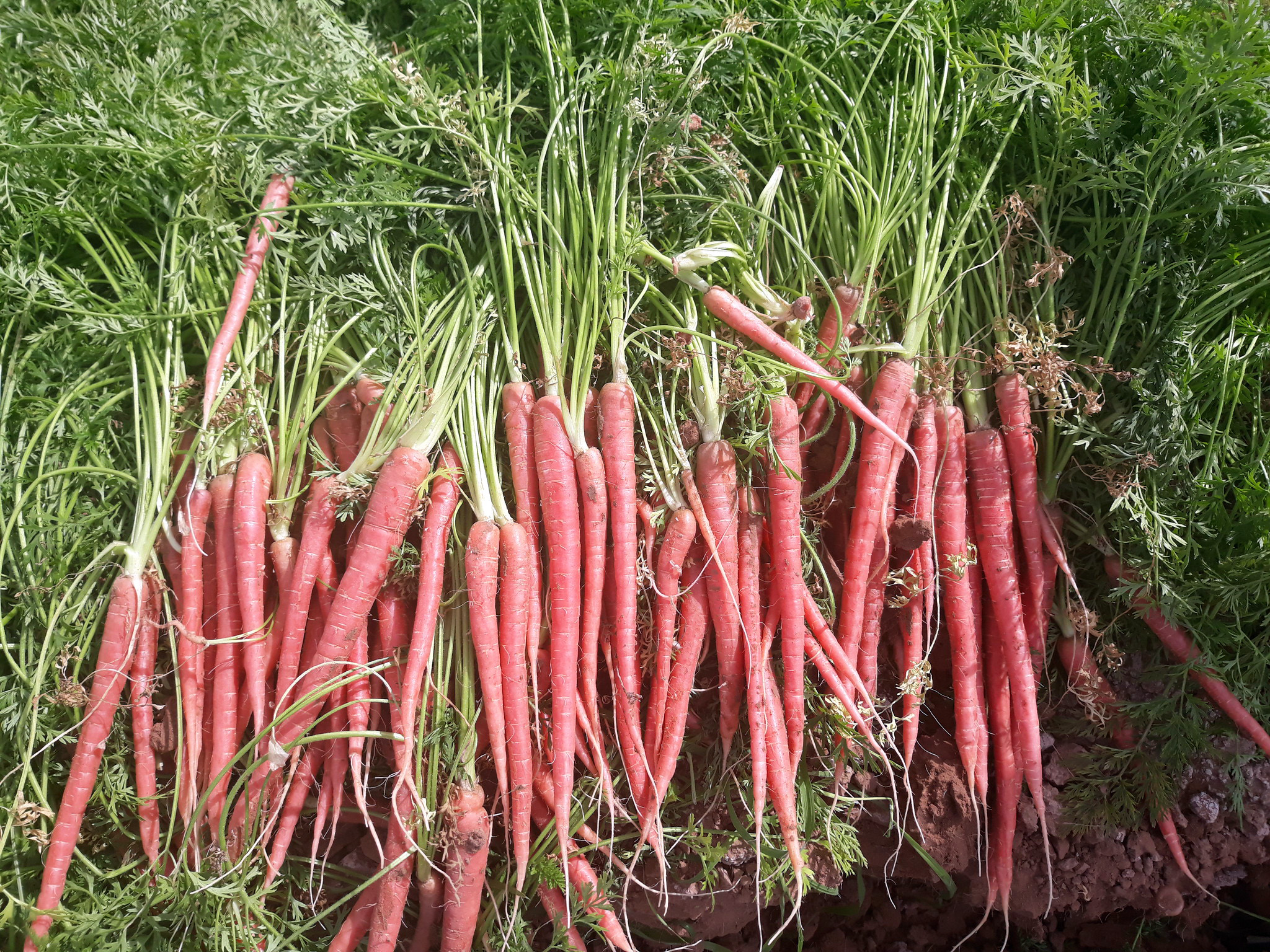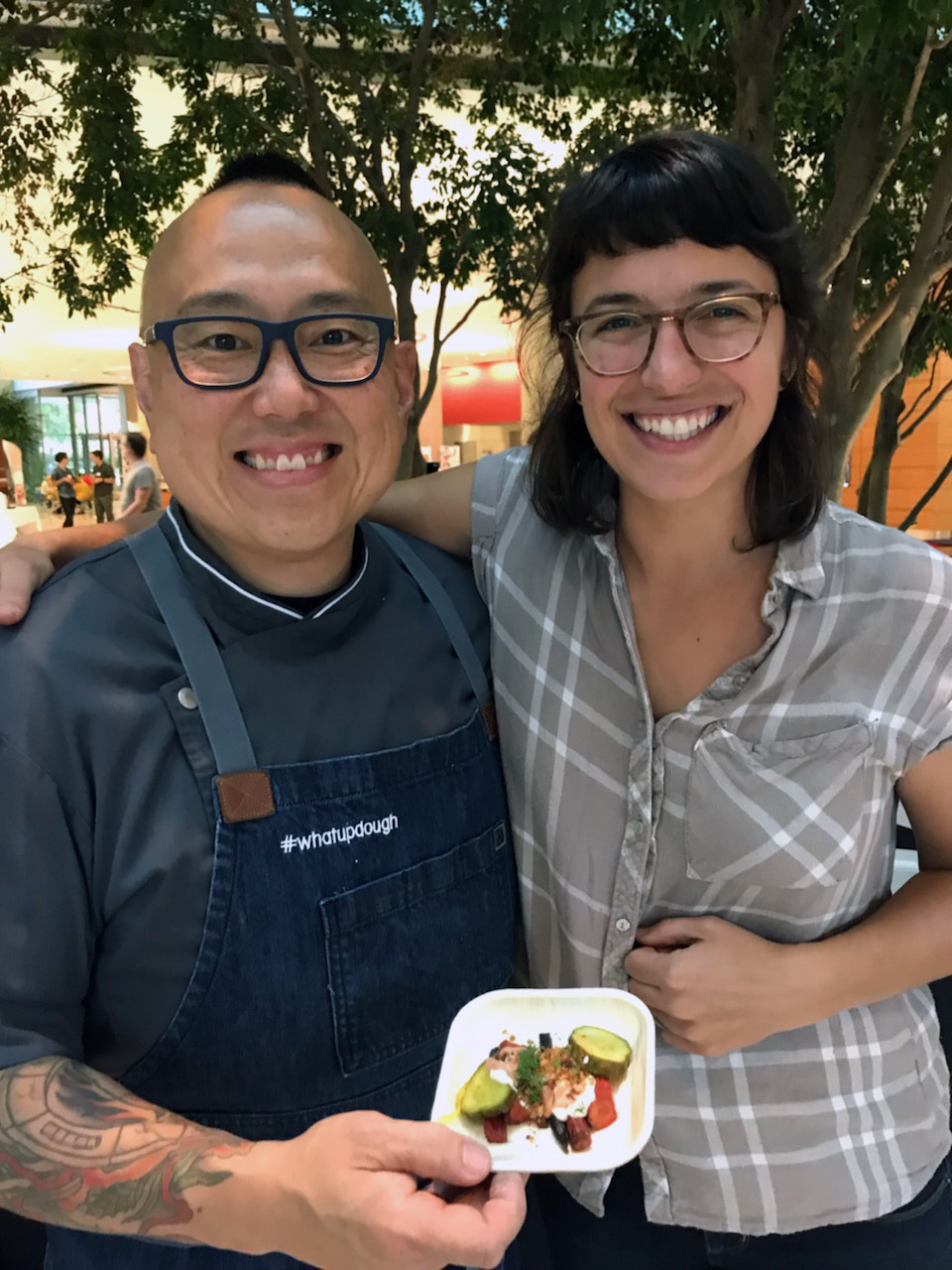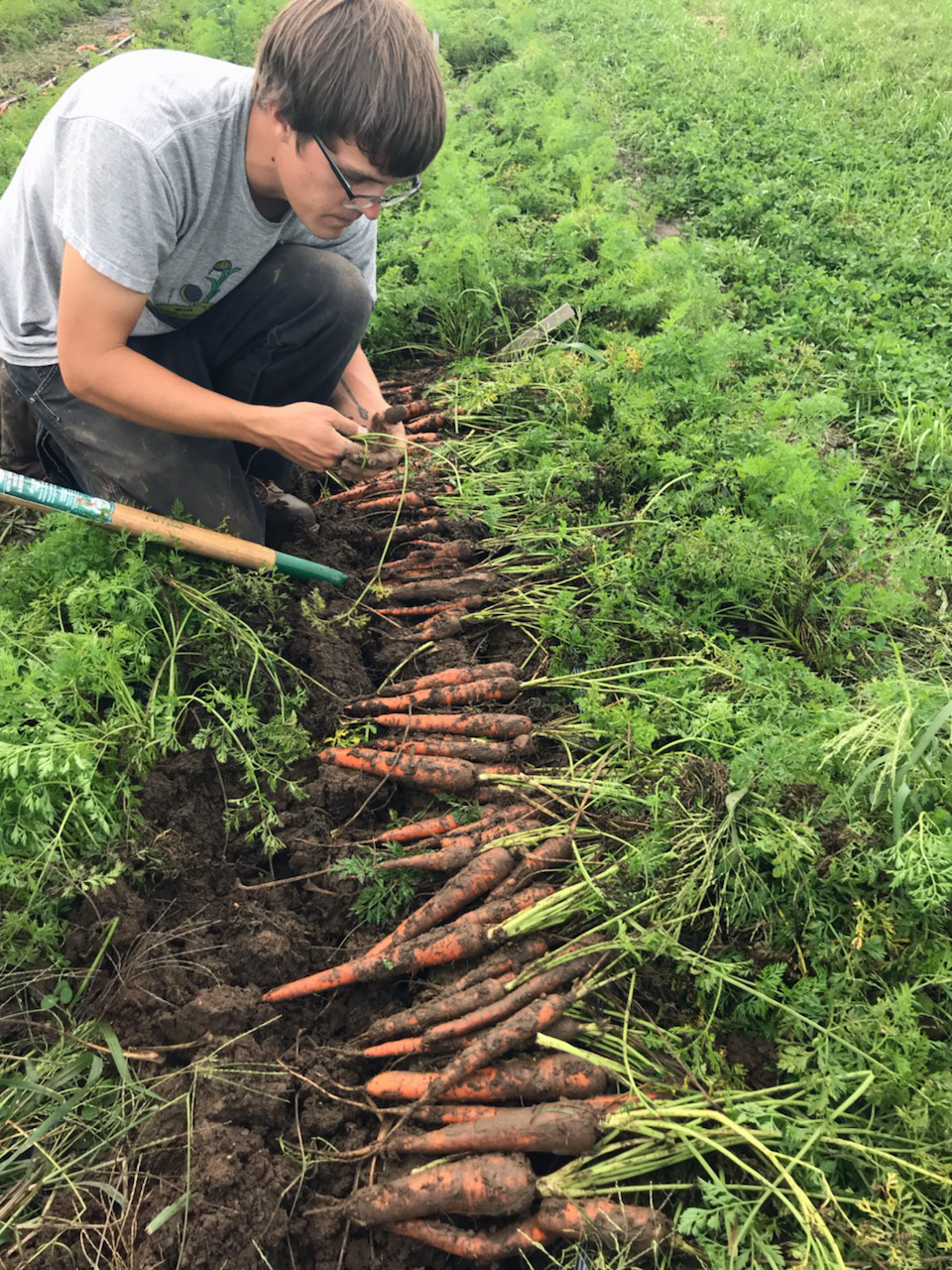
Floral. Sweet. Crispy. Carroty. Discerning eaters know that carrots don’t all taste alike, even organically grown ones.
Carrots are a staple of the US vegetable diet, found at nearly every farmers market and in Community Supported Agriculture (CSA) boxes across the country. Like field performance, carrot flavor can vary dramatically from one variety to the next and under varying environmental conditions. That’s why Dr. Phil Simon, lead plant breeder of the Carrot Improvement for Organic Agriculture (CIOA) project and OSA breeding partner, personally tastes all of the lines he selects throughout the breeding process.
CIOA project partners are testing breeding lines under different environments and making new crosses to improve carrot flavor and nutritional quality. Given demand for multi-colored carrots, we’re working with a rainbow of carrot types, including orange, red, purple, yellow, white, and mixed colors. But taste matters, too, especially to organic vegetable eaters, so selecting for flavor is key. Like Dr. Simon, the OSA research team routinely tastes in the field and evaluates for culinary qualities with chefs and others in our local communities.
Seed to fork
Outside of the field OSA partners in initiatives to improve culinary quality, including the Seed to Kitchen Collaborative and the Culinary Breeding Network. Culinary initiatives like these bring chefs, farmers, and breeders together to explore the rich diversity of flavor in different varieties of our food crops. Working with chefs and farmers also raises our awareness of the culinary heritage and new creative applications that can highlight the unique of differences in variety flavors.

The most common response from organic carrot growers and eaters who are excited about the expanding diversity of novel colored carrots is “we want colored carrots with better flavor.” Dr. Simon explains that orange carrots have historically been developed as fresh eating “snacking” vegetables, while many novel colored carrots come from regions of the globe where carrots are cooked in traditional dishes. For example, during Diwali, the Hindu fall festival of lights, red carrots are a main ingredient in a traditional dish served as part of the celebrations. This year OSA is partnering with the University of British Columbia to trial red carrot lines from Dr. Simon’s program in hopes of finding varieties adapted to their Northern climate to serve the Indian community of Vancouver, BC.
Through CIOA, OSA and Dr. Simon’s program are also preparing to release new red varieties that have better fresh eating quality than what’s currently on the market. Simon began crossing red lines with flavorful orange lines over 20 years ago to improve fresh eating quality in red carrots. He’s also selecting against early bolting (flowering), which is common in red lines grown in the Pacific Northwest because they evolved in climates that are milder than we experience in the cool evenings of our Northern maritime springs.

Carrot pastrami in Midwest carrot country
Last month OSA researchers joined CIOA partners from the University of Wisconsin–Madison in their fields to evaluate 54 carrot varieties for flavor and field durability. We had the opportunity to take part in the Farm to Flavor event to showcase some of the best orange, yellow, red, purple, and white lines grown a few miles down the road at the UW organic research site. Event participants took part in a raw carrot taste test and provided their input.
Guests also got to enjoy a culinary preparation from award winning chef Tory Miller of Graze restaurant in Madison. Chef Tory expanded our sensory imagination with red and purple “carrot pastrami.” He first brined the vibrant colored carrots in a traditional corned beef type of brine with salt, coriander, pepper, garlic, and other spices, then roasted them to bring out the flavor, and presented the transformed roots with traditional Ruben sandwich fixings of sauerkraut and home-made thousand island dressing. Roasting the red roots brightened their color and provided a sweet, chewy texture remarkably reminiscent of pastrami. The dish was a big hit and chef Tory ran out of samples after feeding the long line of new-found red carrot aficionados.
More than meets the taste

The central goal of the CIOA project is the success of organic farmers, which is why OSA is a proud partner on the project. Organic carrot growers need varieties that will thrive in their conditions and have high-quality agronomic traits. To meet these needs CIOA partners are breeding for durable field traits, like disease resistance and weed tolerance.
Visit our resource library for guides on organic carrot breeding, carrot seed production, and variety trial results.
Keep tabs on CIOA
CIOA is making headway in developing new carrot varieties with performance from field to plate and we hope you can join our next tasting event in Portland, Oregon. We’ll be participating in the Culinary Breeding Network Variety Showcase on February 16th, just after the biennial Organic Seed Growers Conference.
You can learn more about CIOA’s work in this recent article in Carrot Country Magazine. The article provides an overview of the challenges organic carrot growers face and how CIOA is working to deliver improved flavor, nutrition, and field performance for organic growers and eaters alike.
The CIOA project was funded by the Organic Research and Extension Initiative grant, part of the USDA National Institute of Food and Agriculture. Award # 2016-51300-25721: CIOA 2-Carrot Improvement for Organic Agriculture With Added Grower and Consumer Value.
